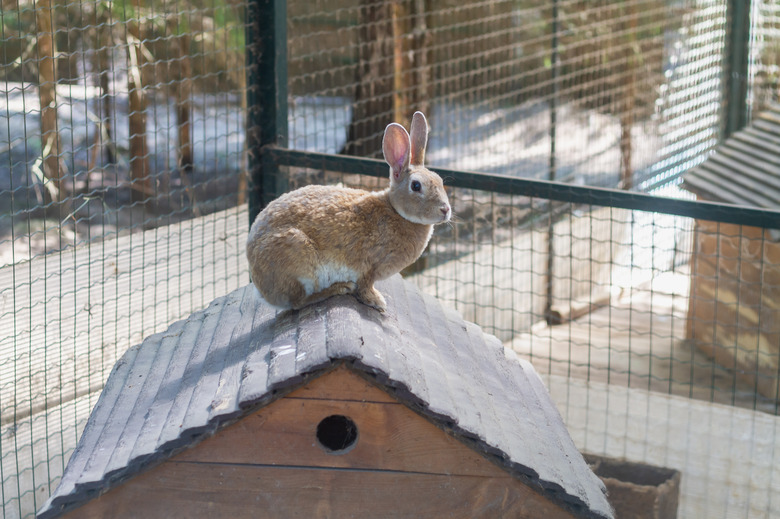How To Keep Rabbits Warm In Winter With A Rabbit Hutch
Keeping a rabbit warm in winter has more to do with keeping her dry rather than placing her inside an insulated or heated structure. Rabbits add fat and grow fur as their natural protection against the elements. If you're keeping your pet outside during very cold temperatures, a snug winter rabbit hutch will ensure she stays warm and dry.
Winter rabbit hutch size
Winter rabbit hutch size
The best outdoor rabbit hutch is roomy enough for your pet to move around and hop a bit. Budget at least 12 square feet for its main living area. It should also have enough airflow to keep him comfortable but not so much extra space that it's hard to keep warm air (created by the rabbit's body heat) inside.
If possible, add a few boxes that your rabbit can duck into if he gets nervous or scared. Make sure there are enough openings so your rabbit can look outside and know what's going on around him. If you're keeping more than one rabbit in the hutch, give them plenty of space and their own beds.
Think about the location
Think
about the location
If you'll be moving your hutch based on the seasons, consider when the sun will be on it and from where the wind will blow. Don't place it on a deck or back porch under eaves that might drip water. Make sure you have easy access to at least three sides for cleaning and feeding the rabbit and for picking up and moving the hutch.
Will there be snow and ice on the ground, making it slippery when you try to walk to the hutch? Consider critters that might want to get at your rabbit as well as curious neighbor kids. Make sure there is a light source available so you can see what you're doing if you visit the hutch at night.
Choose flooring and insulating materials
Choose
flooring and insulating materials
Hutches don't provide the same amount of insulation as a rabbit's natural underground burrow, which can lead to your pet getting hypothermia if her hutch isn't insulated or heated. Depending on the type of hutch you buy or have made, the floor might be uncomfortable for the rabbit, so you'll want to pad it. However, you won't want a material that absorbs urine and feces and gives bacteria a place to grow.
Choose a soft or padded material that's waterproof or material you can easily and affordably replace over and over. If your hutch has thin walls, you might want to insulate the sides with a soft material the rabbit can't chew and ingest. Buy or make a weighted tarp or other covering that you can place over the hutch on cold nights.
If possible, create a rabbit bed by adding a small box filled with newspaper, hay, or straw or place straw or hay on newspaper. The rabbit won't be as likely to mess this area, and you won't need to clean it as often.
Think about feeding and security
Think
about feeding and security
Food and water placed in an outdoor rabbit hutch will attract other critters, so make sure it's away from any openings in the hutch. Use a self-releasing food container and water bottle if you can find one. This way, you won't have to keep remembering to provide food and water to your rabbit. Make sure the water container won't freeze in extremely cold weather. A thick enough covering on any plastic or glass water bottle might do the trick.
Look at all areas of your hutch, including the bottom. Decide how hard it might be for a fox, coyote, or other predator to chew through any part of the hutch or pry it open. Putting the hutch on a table or poles and greasing the legs makes it more difficult for critters to get at the hutch. Don't forget about snakes, which can collapse their bodies to get through small spaces.
Keep kids out of the hutch by having a locked door that only you can open. Place a sign on the hutch to make sure children know they can't play with the rabbit without an adult present.
